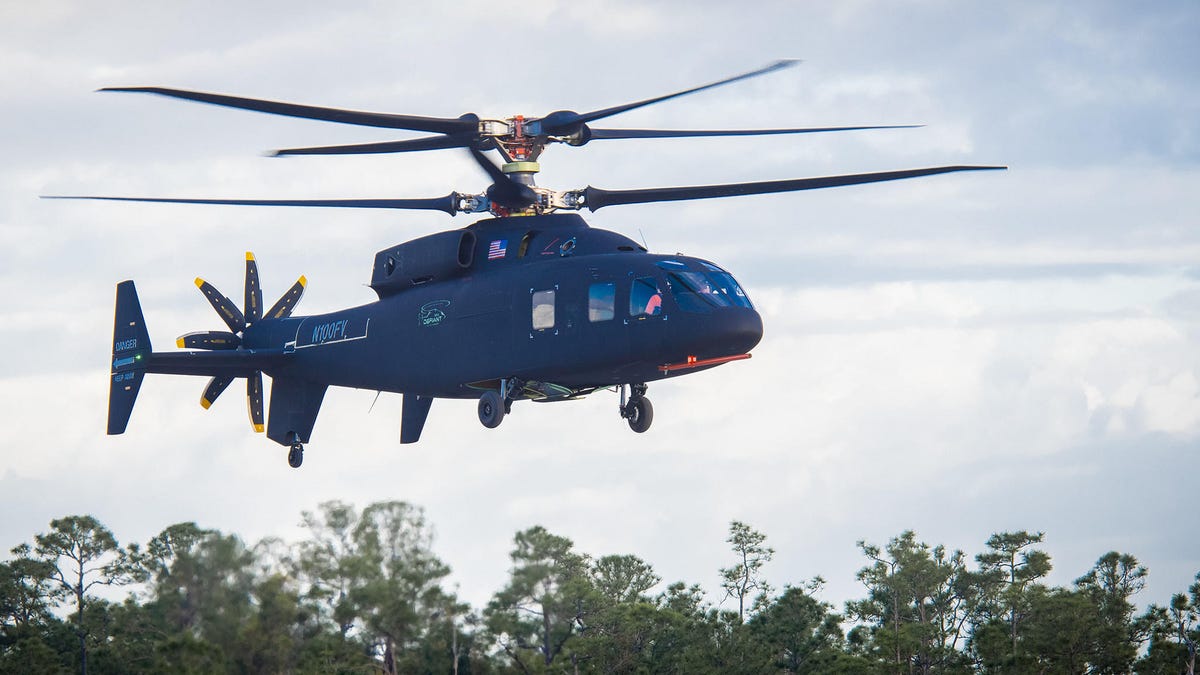This radical Sikorsky-Boeing helicopter just made its first flight
The SB>1 Defiant has not one but two rotors on top, and in the rear, a pusher propeller designed to give it high-speed flight.

The Sikorsky-Boeing SB>1 Defiant helicopter makes its first flight, on March 21, 2019.
You don't see helicopters like this one every day.
On Thursday, the Sikorsky-Boeing SB>1 Defiant lifted off for its first flight, demonstrating that it's more than just a fancy design on paper and in the hangar. Over the course of a little better than 30 minutes, the Defiant proved it can ascend and descend, move forward and backward, and rotate left and right.
The companies described the activity as low-speed flight maneuvers, and a brief video showed the helicopter doing its thing in the area of perhaps 10 to 20 feet off the ground. The test flight took place at a Sikorsky airfield in West Palm Beach, Florida.
The SB>1 Defiant has an unusual design. Where most helicopters have a single main rotor on top for vertical lift, the Defiant has a pair of coaxial rotors, one spinning clockwise and the other counterclockwise to balance out the torque -- that is, to keep it from flipping to one side or the other. That means the aircraft doesn't need the standard side-facing tail rotor. Instead, it has a rear-facing pusher propeller, which is meant to get the Defiant zooming along in high-speed horizontal flight.
"Defiant is designed to fly at nearly twice the speed and has twice the range of conventional helicopters while retaining the very best, if not better, low-speed and hover performance of conventional helicopters," Dan Spoor, a Sikorsky vice president, said in a statement.
Another view of the SB>1 Defiant.
The coaxial design can also be found in some Russian military helicopters, but without a propeller on the tail. Sikorsky earlier used the design (with the pusher propeller) in its experimental X2 helicopter and the follow-on S-97 Raider.
In the video, the Defiant's pusher propeller was inactive.
The Defiant design is under consideration by the US Army for the Future Vertical Lift program, which is intended to find a replacement for many of the US military helicopters in use today. (Eventually, as in by the early 2030s.) Defiant's rival in that area is the Bell V-280 Valor, which isn't a helicopter but rather a tilt-rotor aircraft akin to the V-22 Osprey used by the US Marines. The V-280 has been racking up flight-test miles since its first flight, in December 2017.
Next up, the Sikorsky-Boeing team will analyze Thursday's flight data and lay out a plan for more test flights of the Defiant in the weeks and months ahead.

